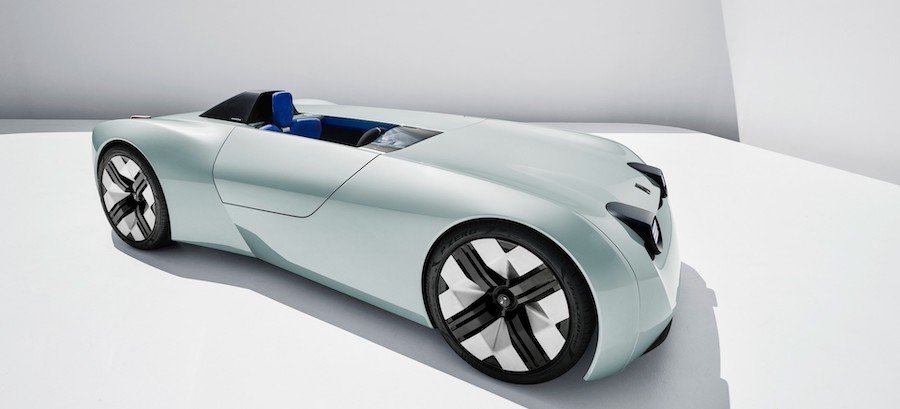Triumph TR25 Concept Shows Us What the British Brand Could Be If Only BMW Cared More

When BMW bought the Rover Group ten years later, Triumph became one of the German automaker's brands. Sadly, it only wanted Mini and Land Rover, which eventually was sold to Ford. BMW could have sold Triumph to a Chinese brand – as it did with MG – but it decided just to let it dormant. Makkina chose to bring it back and asked BMW for permission, which led us to the TR25 Concept you can see in this story.
The British design studio wanted to pay tribute to Triumph and celebrate its 25th anniversary at the same time – hence the TR25 name. The first production TR – the TR2 – was released in 1953, which would allow Makkina to commemorate that as well, but the design studio preferred to focus on a more specific TR: the TR2 MVC575, aka TR2 Jabbeke. That's the name of the Belgian highway with a long straight that allowed vehicles to achieve their top speeds at the time, so Triumph took this prototype there to break a speed record for cars with engines smaller than 2 liters (122 cubic inches). In May 1953, it achieved 124.899 mph (201 kph).
The TR2 MVC575 was then used for other factory needs and sold. Glen Hewett eventually bought a TR2 and discovered riveted rear panels, which led him to figure out that it was no ordinary Triumph: the MVC575. The car is now fully restored and belongs to the British Motor Museum in Gaydon.
Just like Triumph's world record breaker, the TR25 Concept is a single-seater with an optional flip-out jump seat. Unlike the precious museum piece, the car Makkina conceived is electric and uses the BMW i3S "Drive Module," the part of that urban car that is responsible for moving it. The German automaker divided the i3 structure into the Drive Module and the Life Module (the body). Makkina did not disclose how fast the TR25 is or how quickly it can go from 0 to 100 kph (62 mph). Considering it is an electric car, it could also have told us how far it can drive, but it probably did not want to create expectations. Too late, right?
All the design studio shared concerning technical specifications is that it almost managed to achieve a 50-50 weight distribution, which may help the concept car offer a nice handling. We'll probably never know unless Makkina lets a few journalists drive its concept car. Whether it will want to promote its work a bit longer or will be happy with the current repercussion the TR25 had is something we will only know in a while.
Predictably, Makkina preferred to talk about the vehicle's design. If you pay careful attention to the headlights, you'll see the right one (seen from the cabin) brings a 2, and the left one has a 5 written by its light signature. The three-spoke steering wheel also has a nostalgic proposition. However, the central binnacle right behind it is digital and presents information that the TR2 MVC575 designers must have never thought about, such as the range and charge level of the battery pack. The only common element is the speedometer. Although electric cars can also be very fast (for a more limited time), the TR25 certainly does not match the top speed of the TR2 MVC575. Considering it is a one-off, that does not matter anyway.
Could Triumph get back to life and repeat what it did from 1953 until 1984? It could eventually have a shot if it were also sold to a Chinese automaker with deep pockets and a will to sell sports cars. At the same time, it could have the same fate as the MG Cyberster, a gorgeous roadster that lost its ethos when it received a battery pack. As beautiful as it is, it weighs 1,850 kilograms (4,079 pounds) in the best-case scenario and 1,985 kg (4,376 lb) in the worst. The TR2 weighed 953 kg (2,100 lb).
Just check what happened to Lotus. Geely turned it into a luxury electric brand, and the idea of "simplify, then add lightness" that Colin Chapman conceived is diluted. That was the price to pay for survival, but was it worth it for Lotus to resist and lose its very essence? Triumph vehicles were light because all other cars also were when the company made its debut. BMW is probably right to leave the British brand dormant. Apart from not finding any way in which Triumph would make serious money, it would be quite sad to see it wake up with the impression it was living a (heavy) nightmare.
Related News
